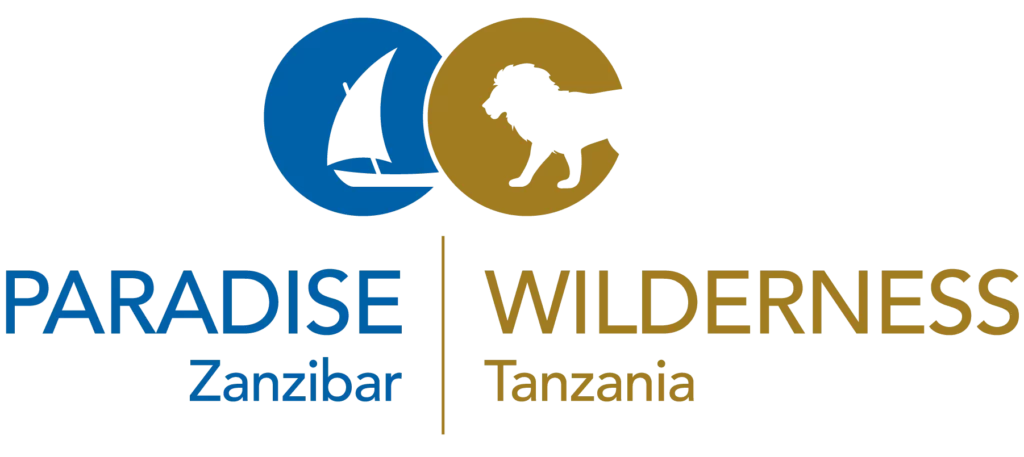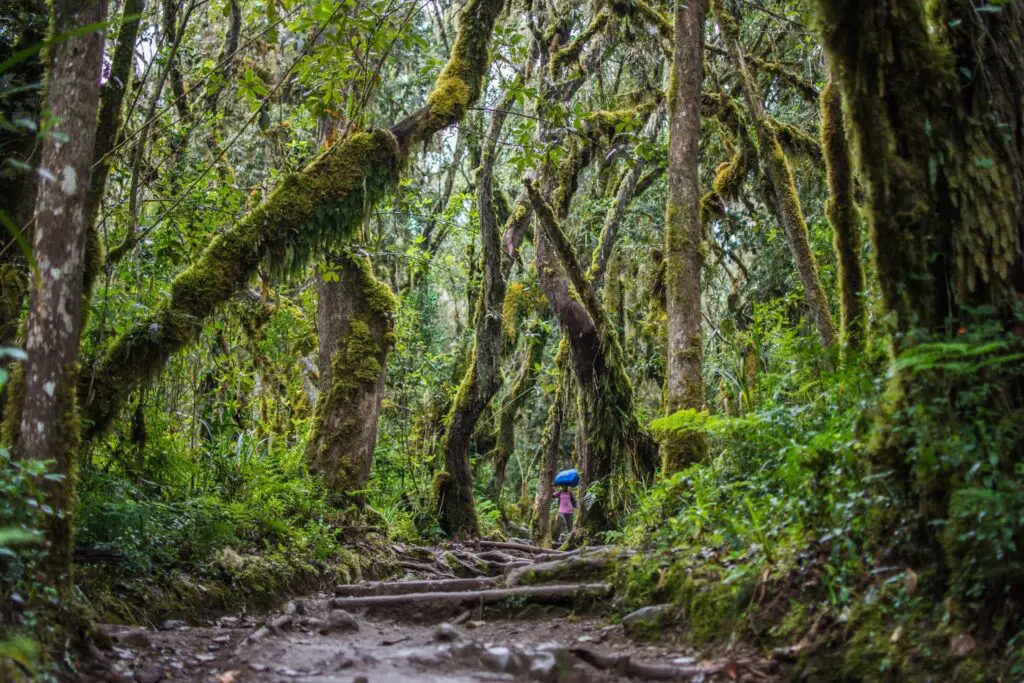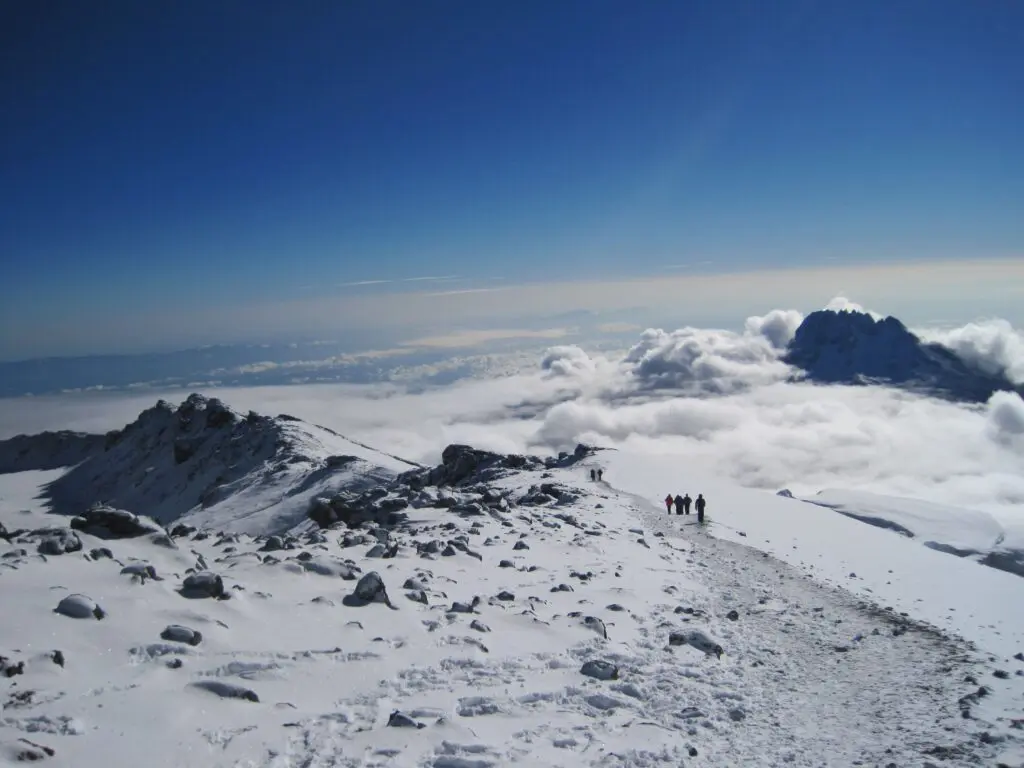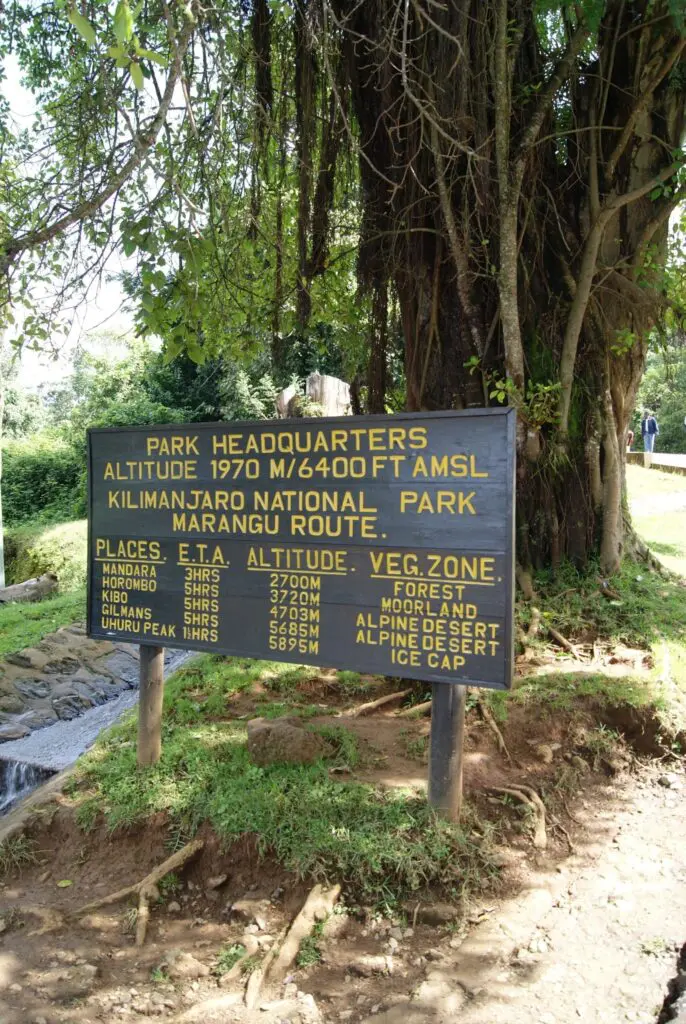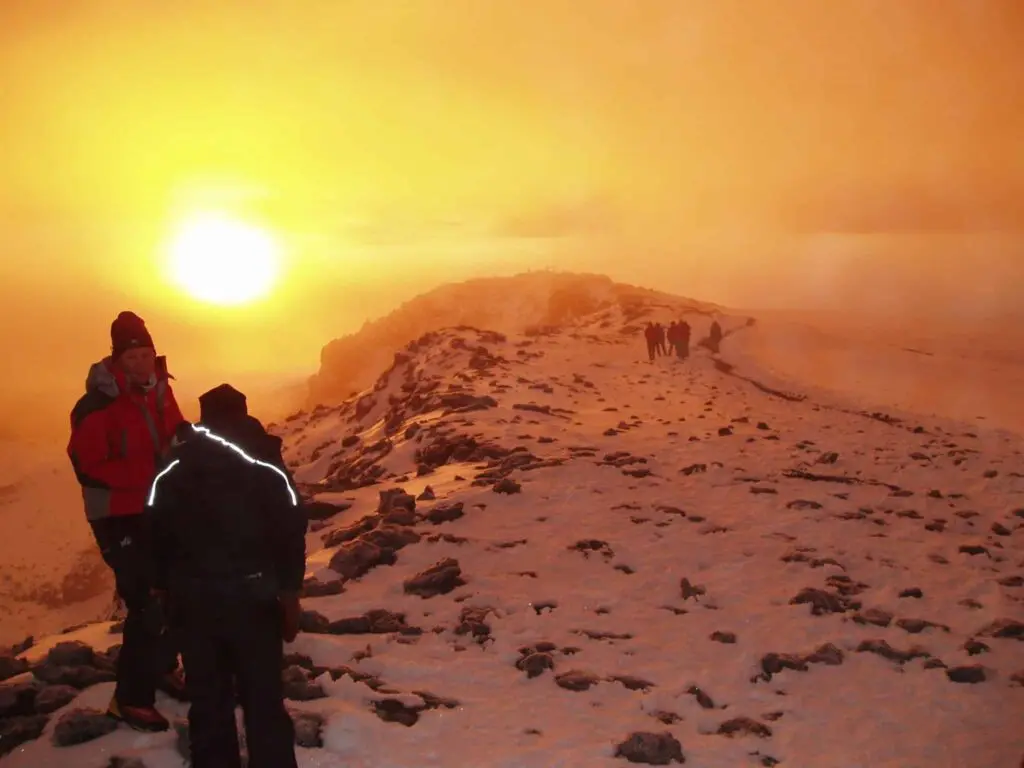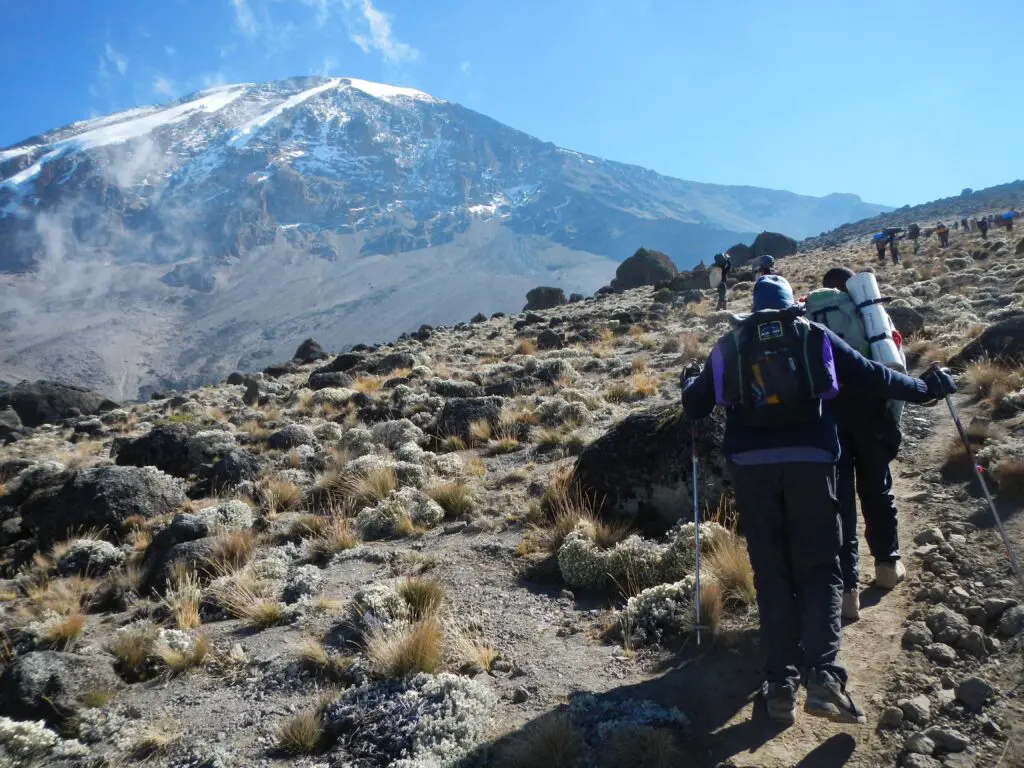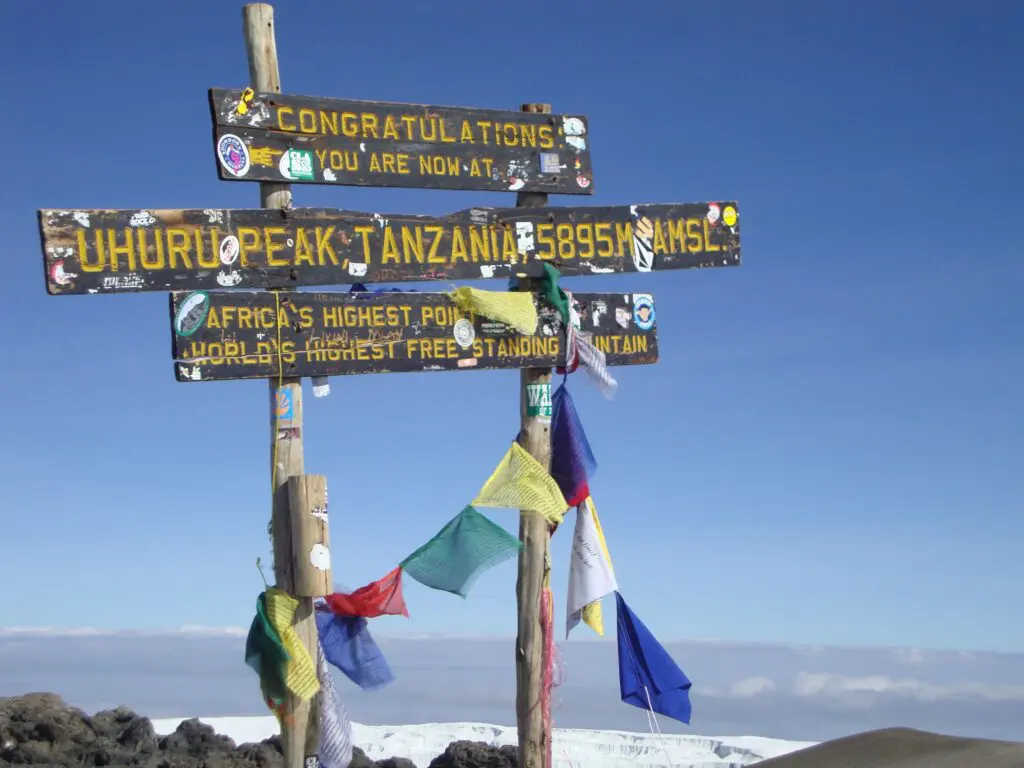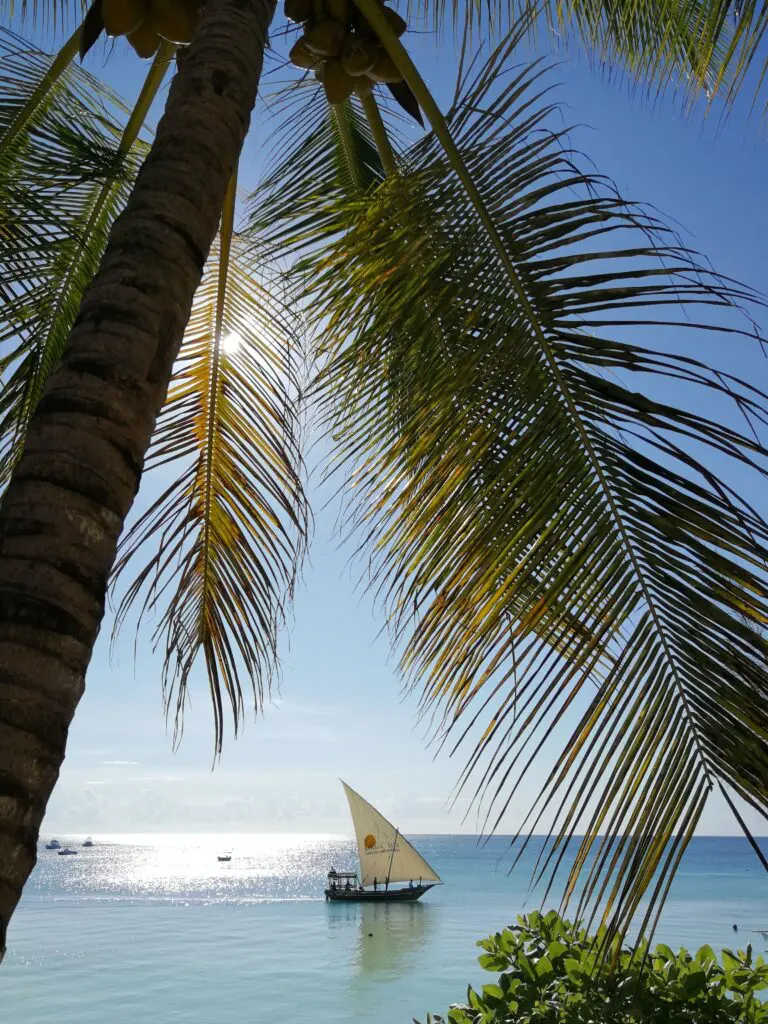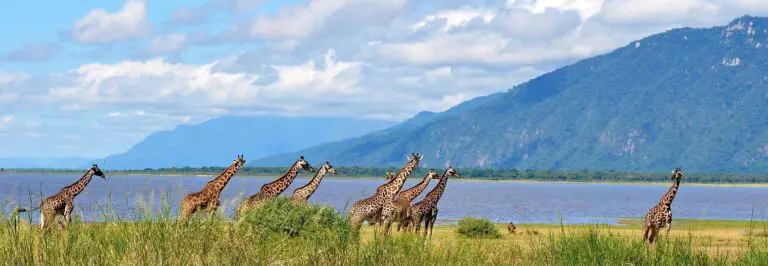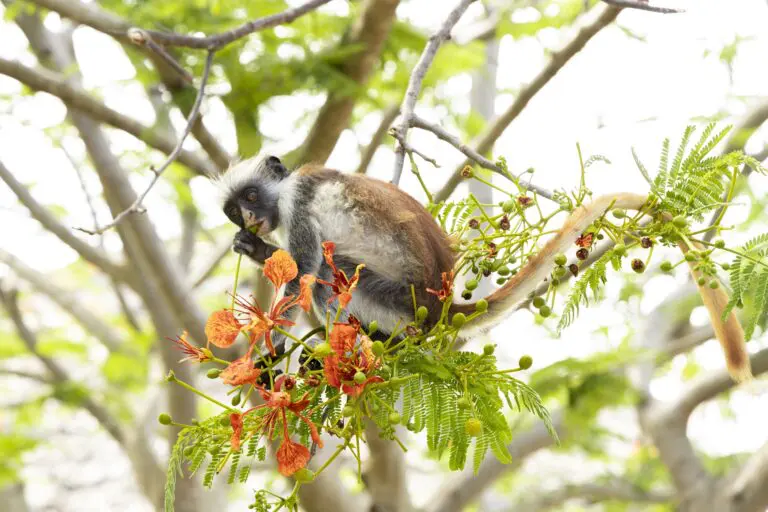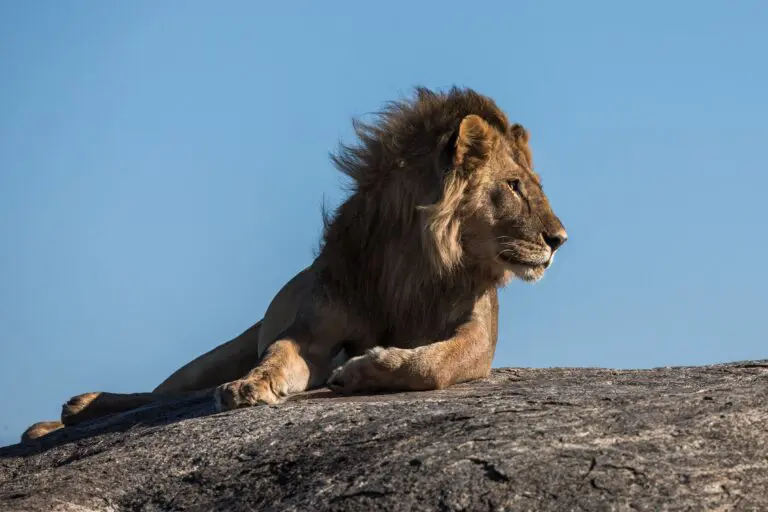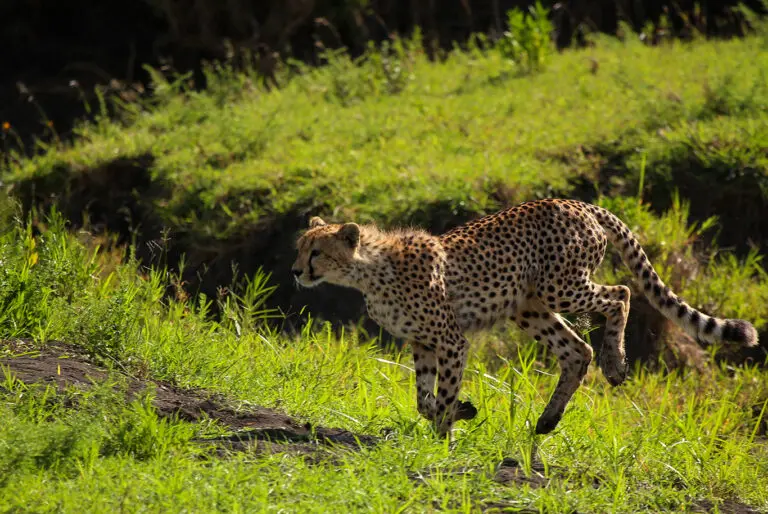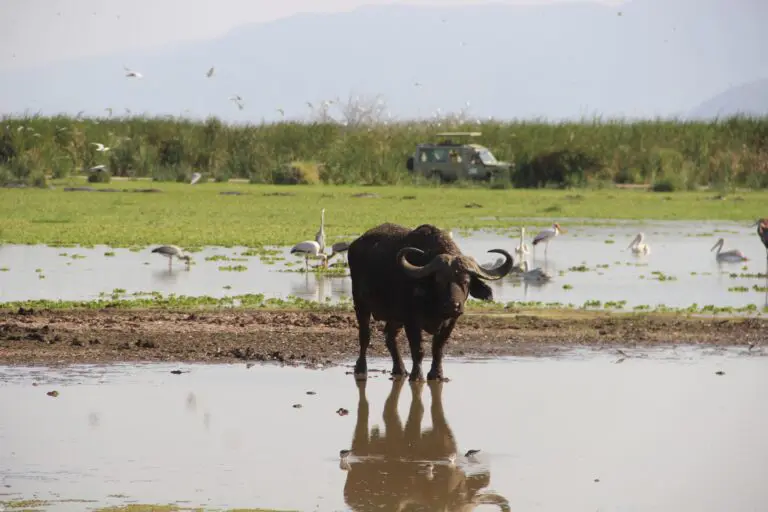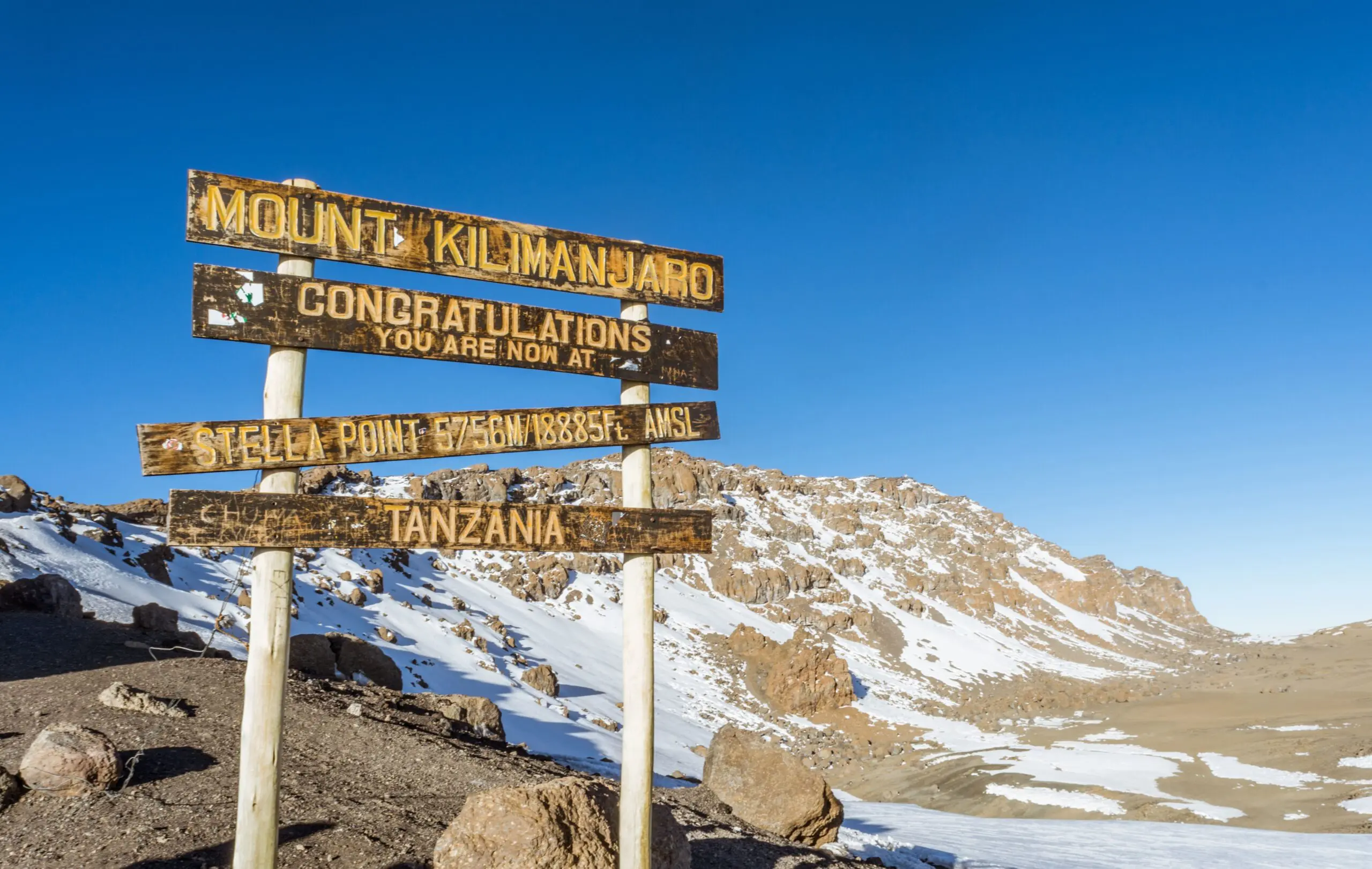
Kilimanjaro National Park
Kilimanjaro National Park: discover the roof of Africa
Mount Kilimanjaro is the highest mountain in Africa and a real eye-catcher of Tanzania. The densely forested base of the mountain slowly turns into grassy plains and rocky outcrops. Only to end with a summit covered in “eternal snow. You can see this snow-capped mountain peak from afar, provided it is not cloudy! This typical Tanzanian landscape with Kilimanjaro included, invites you to stop for a moment during your drive to the first accommodation or on the way back to the airport.
This free-standing mountain, which is also the highest free-standing mountain in the world, is part of Kilimanjaro National Park and a UNESCO World Heritage Site. The area offers beautiful hiking trails. From impressive hikes to imposing waterfalls to multi-day treks to the summit located at 5,895 meters. The base of Kilimanjaro has many coffee plantations, where you can get educational tours. Of course with a delicious fresh cup of coffee at the end.
Experiencing Kilimanjaro without summit ambitions
For travelers who prefer to keep both feet on the ground, there are several ways to experience the beauty of Kilimanjaro up close.
One of the most popular options is a day trip to Mount Kilimanjaro. You take a day hike to Mandara Hut via the Marangu Route. This trek takes you through cloud forest and bamboo forests, past tropical wildlife and monkeys. With no risk of altitude sickness, you will enjoy a fantastic introduction to the mountain landscape here. You walk up to about 2,700 meters altitude and return after lunch. This day hike is perfect for those who want to be active but are not looking for a multi-day trek.
Prefer a cultural experience? Then opt for a combination of the Materuni waterfall and a traditional coffee tour. After a short walk through the forest, you will be rewarded with a view of an impressive waterfall. Afterwards, you will visit a Chagga family who will tell you all about growing, roasting and brewing local Arabica coffee.
You can also experience Kilimanjaro by 4×4. The drive to the Shira Plateau takes you to an altitude of about 3,500 meters without too much effort. Here a panorama of the national park awaits, a unique place for a picnic or photo stop if you ask us.
For relaxation after an active day, a visit to the Kikuletwa hot springs is highly recommended. The warm, clear water offers a wonderful contrast to the fresh mountain air of the Kilimanjaro region.
For those who want to climb: routes and tips
Climbing Mount Kilimanjaro, Africa’s highest mountain, is an epic adventure that attracts adventurers from all over the world. This majestic mountain, rises to a height of 5,895 meters above sea level and offers a unique opportunity to traverse diverse climatic zones, from tropical rainforests to alpine deserts.
Kilimanjaro is not a technical climb and requires no mountaineering experience, but it is a physical and mental challenge. You will be rewarded with breathtaking views and a sense of accomplishment when you reach the summit, called Uhuru Peak. Along the way, you will pass through a stunning variety of landscapes and ecosystems and have the chance to enjoy the rich flora and fauna of Kilimanjaro National Park.
Climbing Kilimanjaro is an unforgettable adventure that is a true bucket list experience for beginners and experienced mountaineers alike. It is a journey that tests not only the physical strength but also the determination and perseverance of those trying to reach the summit.
Combine Kilimanjaro with your tour
Thanks to its location close to Kilimanjaro International Airport, a visit to the national park is ideal as the start or end of your safari. Many of our travelers opt for a day hike on the day of arrival, or just as a rest before the return flight. The coffee tour or hot springs are also easy to combine with our accommodations in the region.
At Paradise & Wilderness we take the organization out of your hands, so you only have to focus on enjoying yourself. So ask us about the possibilities to make your visit to Kilimanjaro as suitable as possible.
Frequently Asked Questions
Is climbing Kilimanjaro dangerous?
Not if you are well prepared. The climb is physically challenging, but not technical. With proper guidance and acclimatization, it is achievable for many people.
Is it possible to hike Kilimanjaro in one day?
Yes, you can explore part of Kilimanjaro on a day trip. You then walk up to a certain point on the mountain, depending on your route and fitness level. Reaching the summit in one day is not possible (and medically irresponsible), but you will experience the magic of the mountain.
Can I visit Kilimanjaro even with a fear of heights?
Sure. Day trips stay below 3,000 meters and have no steep precipices. You decide how far you go.
What is the lightest activity around Kilimanjaro?
A coffee tour or a drive to the hot springs is low-key and cultural, ideal for families or those seeking peace and quiet.
Are day trips suitable for children?
Yes, especially the waterfall and coffee tours are great for young travelers.
What do I take with me on a day trip?
Sturdy shoes, a daypack with a small first aid kit, sunscreen, raincoat, food, at least 1.5 liters of water and your camera. A walking stick may also be nice. We provide a professional guide.
How hard is the hike physically? Do I need to be fit?
You don’t have to be an athlete, but a reasonable basic level of fitness is important. You will be walking for hours uphill and at altitude, which can be tiring. With enough rest and a leisurely pace, it is doable for active travelers.
Will I get a guide during the day trip?
Yes, a certified guide is mandatory on every trek on Kilimanjaro. He or she will accompany you, explain nature and ensure your safety.
What are the chances of fog, rain or cold?
The weather can change quickly. It is often clear in the morning, but fog or rain sets in in the afternoon. It can get chilly, so dress in layers.
Other excursions near Kilimanjaro
Want to extend your visit to Kilimanjaro National Park with other special activities in the region? Paradise & Wilderness offers several day trips that combine well:
- Materuni Waterfall & Coffee Tour.
A guided hike to the impressive Materuni Waterfall, followed by a traditional coffee tour with a Chagga family. - Kikuletwa Hotsprings.
Relax in natural hot springs, also known as Chemka Springs, surrounded by tropical greenery. - Hike at Lake Duluti
A peaceful forest and canoe hike around the atmospheric crater lake near Arusha, easily accessible from the Kilimanjaro region. - Canoeing on Lake Duluti
For those who prefer to go out on the water alone: a calm canoeing experience in a unique natural setting.
Wondering what best suits your trip? Check out all our excursions and easily put together your ideal day program.
Plan your trip to Kilimanjaro National Park
Want to experience Kilimanjaro without worries? Opt for a fully arranged day trip through Paradise & Wilderness. Let us know what you’re looking for (active, cultural or relaxing) and we’ll take care of the rest.
Practical information
Location: Kilimanjaro National Park is located in northern Tanzania and includes the majestic Mount Kilimanjaro, Africa’s highest mountain.
Entrance fee: The entrance fee to Kilimanjaro National Park varies depending on the route you choose to climb the mountain and the duration of your climb. Costs also include permit and guide fees. All entrance fees and charges (Park fee) are included in our trips.
Best time to climb: The best time to climb Kilimanjaro is during the dry seasons, which run from January to March and from June to October. These periods offer the most favorable weather conditions for climbing.
Climbing routes: There are several routes to climb Kilimanjaro, varying in difficulty and duration. Popular routes include the Machame route, the Marangu route and the Lemosho route. Each route has its own characteristics and requirements.
Climate: The climate on Kilimanjaro varies greatly with altitude. It can range from tropical at the base of the mountain to arctic at the summit. Make sure you have appropriate clothing to keep yourself warm and dry.
Health and Safety: Climbing Kilimanjaro can be physically challenging. It is important to seek medical advice and be in good physical condition before embarking on the trek. Altitude sickness is a real risk, so it is important to acclimate and hydrate adequately.
Round trips
Check out our inspiration trips to Tanzania and/or Zanzibar that can be customized.
